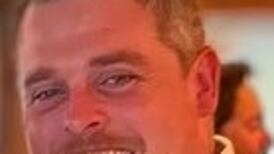Francis Bacon met George Dyer, the man he most painted and most desired, when Dyer, a petty criminal from east London, dropped through the skylight of Bacon's mews house one night in 1963, intending to commit robbery.
“You’re very clumsy for a burglar,” Bacon allegedly told Dyer, who was 25 years his junior. “Take your clothes off. Come into my bed, and afterwards you can take whatever you want to.”
Bacon’s tender and brutal relationship with Dyer lasted eight years, until Dyer died from an overdose of alcohol and barbituates in their Paris hotel room, two days before Bacon’s retrospective was to open at the Grand Palais, in October 1971.
Bacon was by then world famous, attracting prices that rivalled Picasso’s. Distraught though Bacon was, he hushed up Dyer’s death to prevent it distracting from his crowning achievement.
Francis Bacon: Books and Painting, a major exhibition spanning the last two decades of Bacon's oeuvre, at the Pompidou Centre in Paris until January 20th, 2020, does not dwell on Bacon's love life, although his sadomasochistic homosexuality is omnipresent in the paintings. Nor does it mention the astronomical prices commanded by his works. (The record was set by Three Studies of Lucian Freud, which sold for €106 million in New York in 2013.)

Instead the Pompidou show, curated by Didier Ottinger, focuses on Bacon's literary inspirations and his late goal of recounting his own life, intertwined with the history of the 20th century. The later paintings are characterised by intense colours, including pinks, mauves, yellows and oranges, and a more precise and spare style.
“After the Paris exhibition I am determined to get started on the painting of my autobiography,” Bacon said, referring to In Memory of George Dyer, his 1971 triptych. “I hope by means of this series to crystallise time, in the same way as Proust did in his novels.”
Bacon was consumed by guilt about Dyer's death. "Not an hour goes by, of course, when I don't think about George," Bacon told his biographer Michael Peppiatt. "I feel profoundly guilty about his death. If I hadn't gone out, if I'd simply stayed in and made sure he was all right, he might have been alive now."
Bacon was born on Baggot Street in Dublin and spent most of the first 16 years of his life in Ireland. Barbara Dawson, director of Dublin City Gallery the Hugh Lane, acquired the contents of Bacon's London studio, including more than 1,000 books from Bacon's library, for Dublin in 1998. The studio was reconstructed down to the tiniest details inside the Hugh Lane. A maquette is included in the exhibition at the Pompidou Centre.
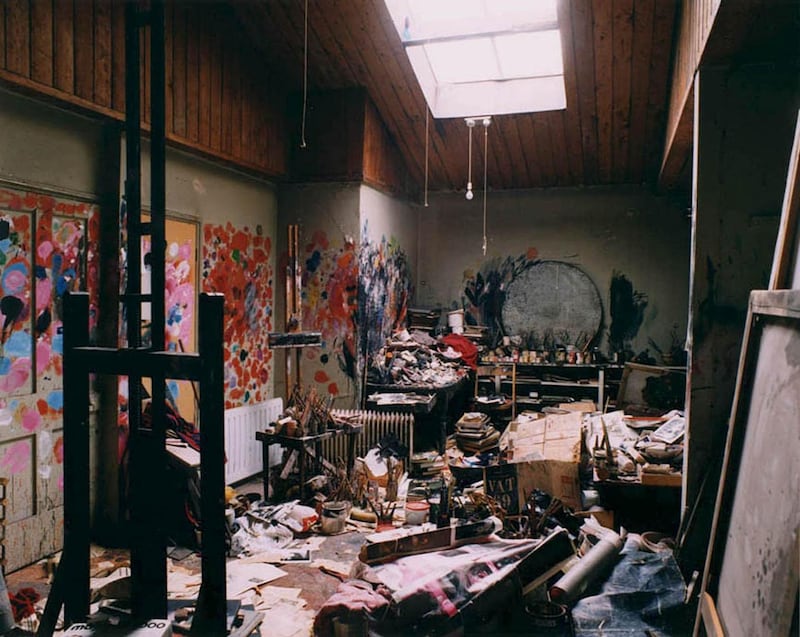

Ottinger took the unprecedented approach of comparing Bacon's oeuvre to prose by six writers who inspired him. The curator borrowed books by Aeschylus, Nietzsche, Joseph Conrad, TS Eliot and the French writers Georges Bataille and Michel Leiris from the Hugh Lane. Each book is presented in a glass case inside a darkened room. An actor's voice reads excerpts, in English.
“It may be that Francis Bacon’s literary passion came from his Irish learning,” says Ottinger. “Ireland is the country of poets. Yeats was fundamental for him.”
Ottinger perceives “a profound affinity” among the six writers in their tragic sense of history and Nietzschean philosophy, “by which I mean Dionysus and Apollo, form and meaning, light and shadow, life and death, Eros and Thanatos, civilisation and barbarianism.”
In The Oresteia, Aeschylus’s trilogy of tragic dramas, Orestes kills his mother, Clytemnestra, who killed her husband, Agamemnon, who sacrificed his daughter, Iphigenia. Bacon was fascinated by the tale, and by Eliot’s modern version in The Family Reunion.


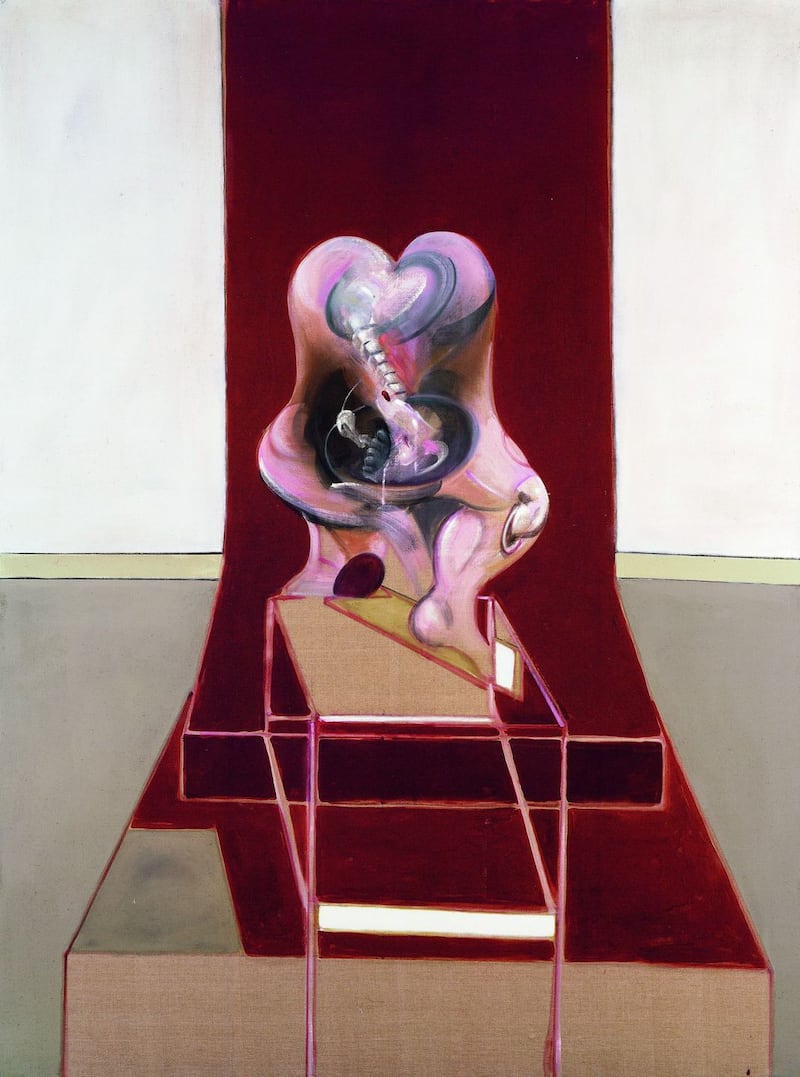
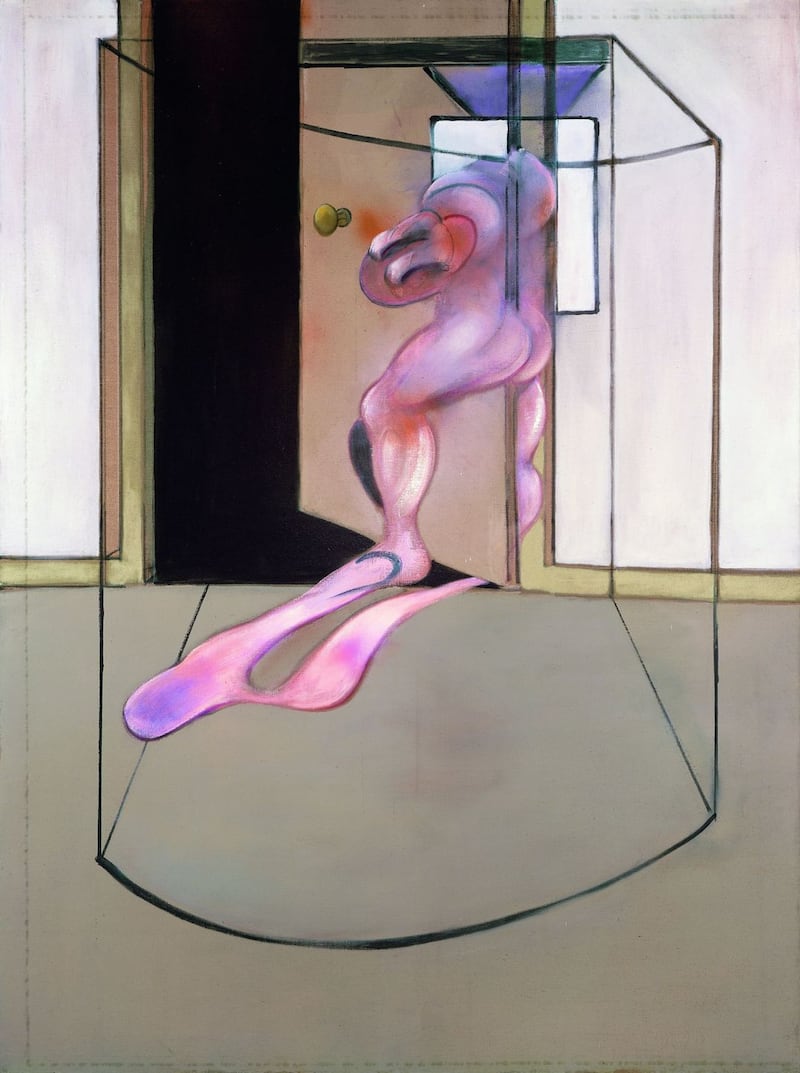
Bacon used the Furies from Aeschylus to symbolise the guilt that gnawed at him about Dyer’s death. In 1988 he painted the Furies as surreal creatures resembling disembodied organs. The first seems to crouch over itself in pain and grief. Two others are threatening and screaming human mouths mounted on neck-like stems.
Bacon's nightmarish orifices remind one of the mouth that appears on Samuel Beckett's pitch-black stage in Not I. The painter traced their inspiration to a scene in Sergei Eisenstein's film Battleship Potemkin. "I hoped to make the best painting of a human scream," he told the British art critic David Sylvester. "I wasn't able. Eisenstein's is much better."
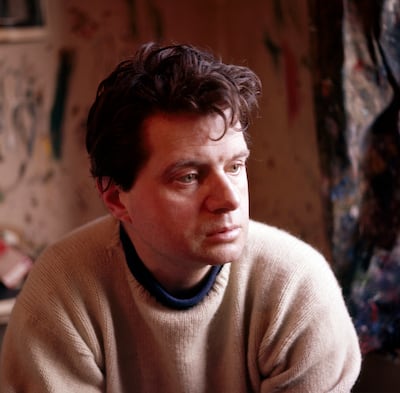
Meat carcasses are another recurring theme. “A friend from Bacon’s youth later recounted how Bacon would stop at a butcher’s shop in Kildare on the cycle ride back from Naas tennis club,” Barbara Dawson recalls.
“If I go into a butcher’s shop I always think it’s surprising that I wasn’t there instead of the animal,” Bacon later told Sylvester. Like Aeschylus, Bacon favoured the triptych as a form of expression.
In Memory of George Dyer, from 1971, shows Dyer as a boxer who has suffered a knockout blow, writhing on the floor. In the middle panel, a dark figure stands before the staircase to their room in the Hôtel des Saints-Pères. Torn newspapers, another recurring theme, are Bacon’s nod to cubism. A disembodied arm is wrapped around the dark figure’s back, and turns a key in a lock.
Bacon borrowed the image of the arm from Picasso’s Bathers of Dinard, which he had seen in a 1927 exhibition at Paul Rosenberg’s gallery in Paris. Bacon worked as a decorator at the time. Picasso’s surrealist canvases made him want to be a painter. In 1936 he tried to join a surrealist exhibition in London, but he was rejected on the grounds he was not surrealist enough.
In the right-hand panel of In Memory of George Dyer, Bacon’s dead lover is framed in profile. Dyer appears cleaved in two at the chest. His mutilated trunk falls forward from the portrait and lands like a reflection on a blue tabletop. White paint is smattered across Dyer’s chest. Bacon marked paintings that held an erotic charge for him with sperm-like stains.
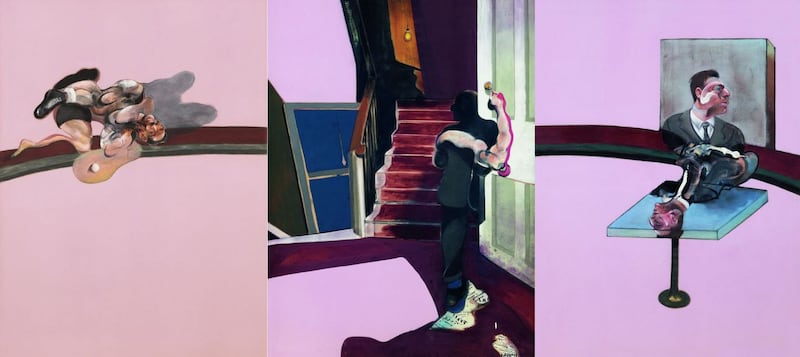
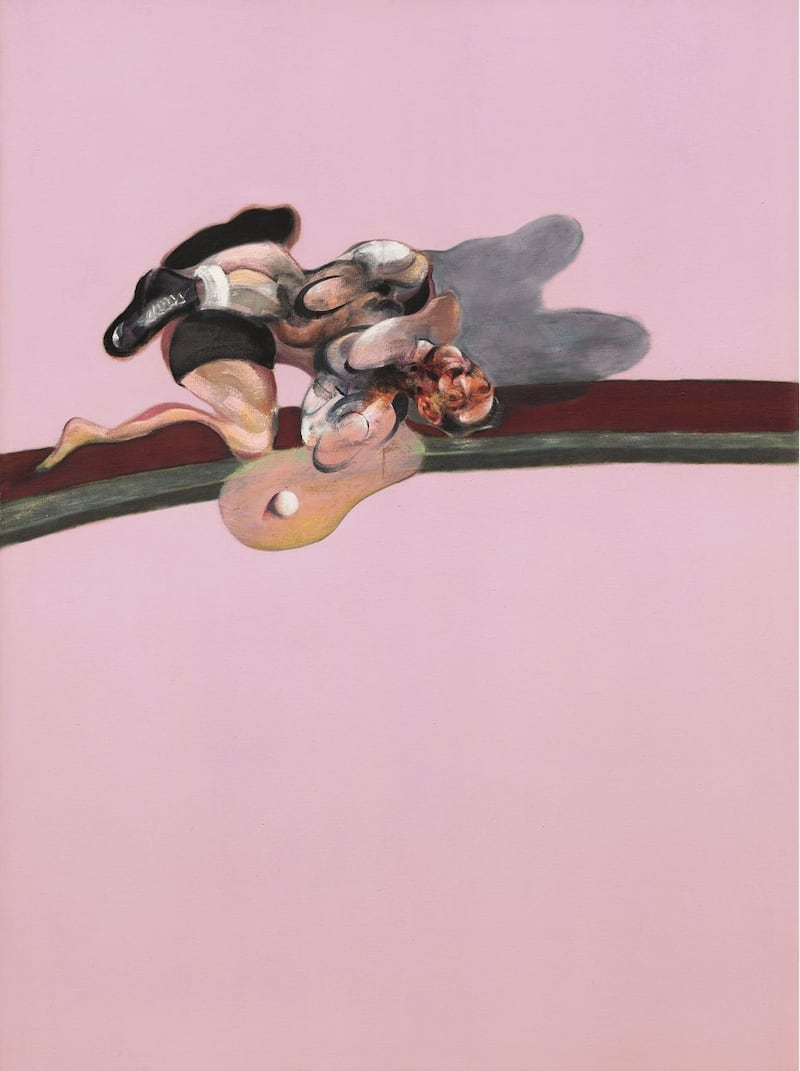
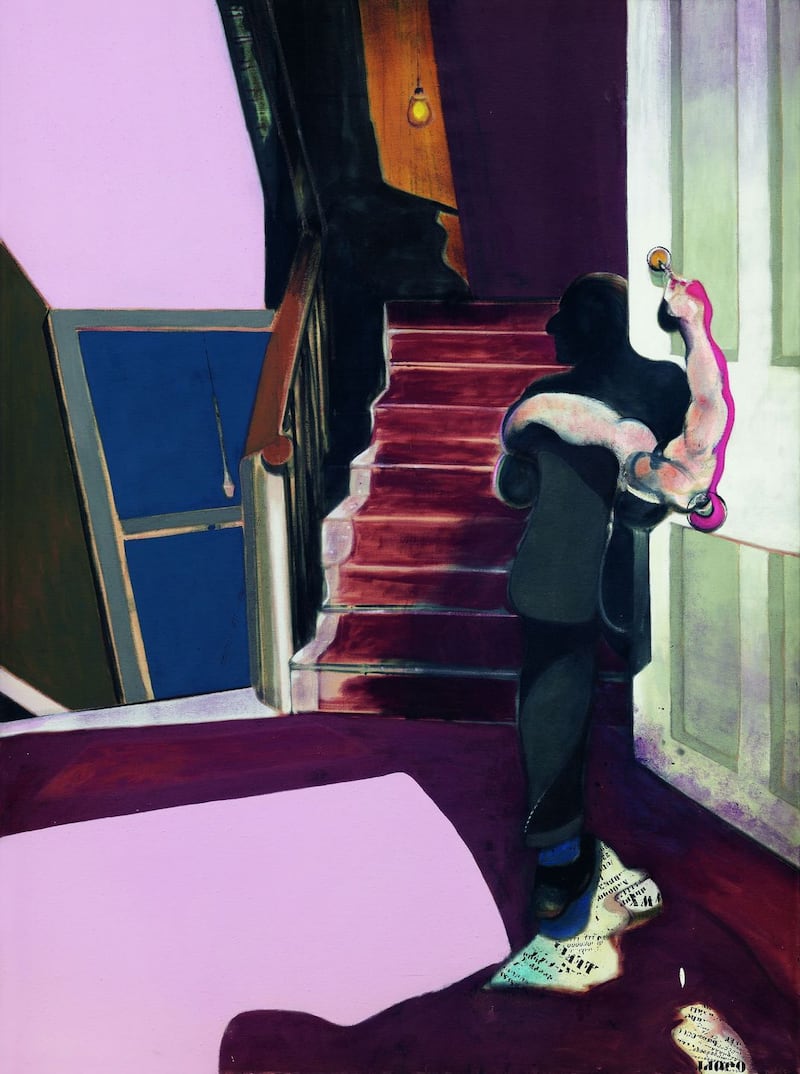
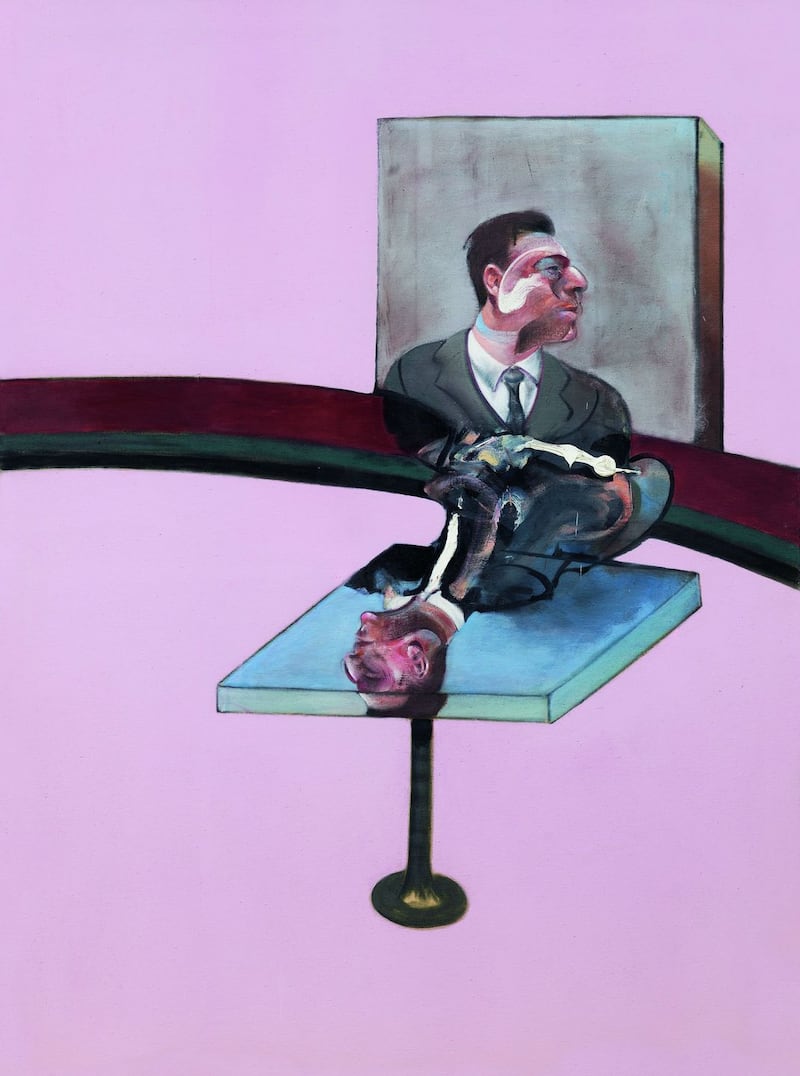
Triptych May-June 1973 recounts the circumstances of Dyer’s death. On the left, a male figure is crouched on the toilet, the position in which Dyer was found. In the centre, black shadows seep from Dyer’s anguished figure, beneath a naked light bulb. On the right, Dyer vomits into a sink. Again, Bacon marked the triptych with smears of white paint.
Bacon identified with the tragic sense of history he found in Aeschylus and Conrad. In the 1970s he determined to paint the history of the 20th century, as well as his own life story.
Triptych 1986-1987 portrays historic figures, including Woodrow Wilson descending the steps of the French foreign ministry after agreeing to the treaty that would lead to the second World War. The site of the assassination of Leon Trotsky in Mexico appears in the same triptych, also inspired by a newspaper photograph. John Edwards, Bacon's friend, surrogate son and heir, appears seated, naked and oozing pink liquid, in the central panel.
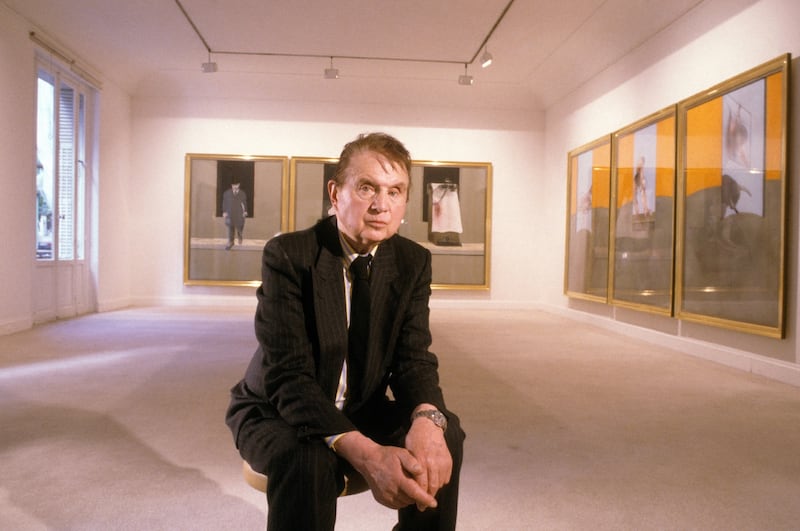
Bacon’s art is too brutal, some might say ghastly, to be immediately accessible or pleasing. The excretions, suppurating wounds, raw meat and carrion are unsettling. But Bacon claimed there was nothing morbid or hard about his painting, “only the violence that surrounds men at every second of their lives”.
“Birth, sex and death. He gets it by the throat,” says Dawson. “It’s visceral. And yet he manages to make it quite beautiful. He creates the most beautiful colours, the most interesting compositions. They can be tender, in the way that a bruised face can be tender.”
There was “a lot of anguish, a lot of torment” in Bacon, Dawson continues. “He said he shared with the Irish a certain exhilarated despair, or a desperate optimism.”
Ottinger, the curator of the Pompidou exhibition, also bridles when I suggest that death and barbarity are the dominant features of Bacon’s oeuvre. “Look at the mastery of the execution,” he says. “Look at his deployment of geometric forms. Bacon was fascinated by perfect forms of geometry. He painted polyhedrons everywhere.”
Polyhedrons are solid figures with many plane faces, usually more than six. They often frame or encase Bacon’s figures.
Bacon developed his concept of immaculate painting in his last decades. The term means, literally, spotless, but it took on an almost metaphysical meaning for him. He told Sylvester that his Water from a Running Tap, from 1982, was the most immaculate of his paintings.
Art historians long considered Bacon’s final 20 years to be his weakest. Ottinger believes they were his best years, “because they appear so to me, and because Bacon said it”. What was so special about them? Ottinger replies with one word: “Immaculate”.
Francis Bacon: Books and Painting is at the Pompidou Centre, in Paris, until January 20th, 2020










